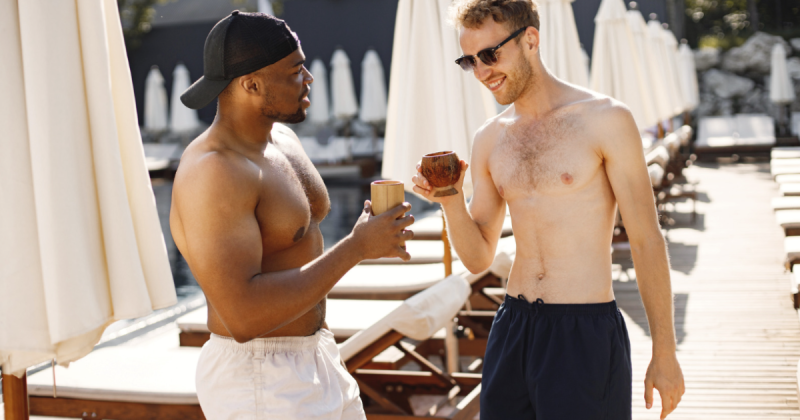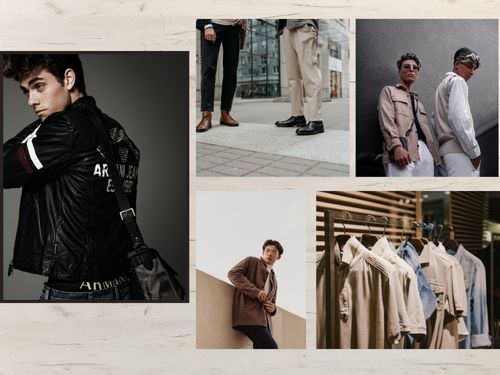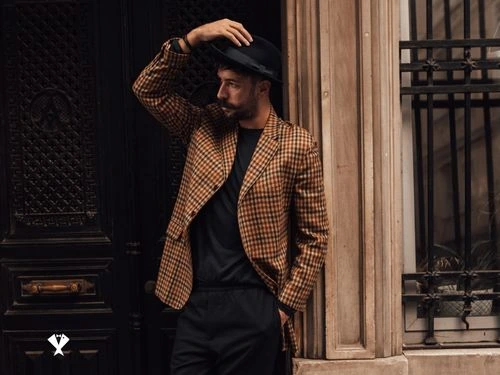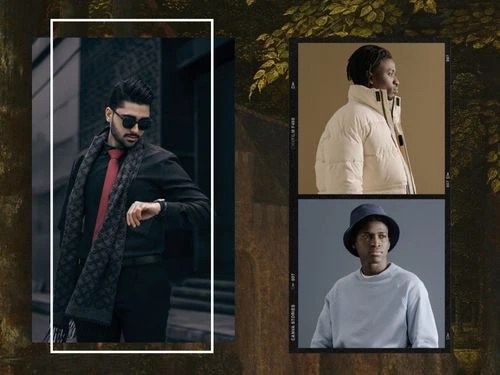When the sun is scorching, there’s nothing quite like the refreshing feeling of diving into cool water. But finding the perfect swimwear for men that not only flatters the body but also fits style and comfort can be a real challenge. With so many options, choosing the right one that matches your taste and the latest trends can feel overwhelming. It’s all about balancing comfort, confidence, and a little fun when selecting the right swimwear. Whether after something classic, trendy, or unique, the right swimwear should make you feel good and reflect your style. Explore various options to discover what suits you best; it will enhance your enjoyment of sunny days by the water.
Exploring Modern Swimwear for Men: Different Types and Styles
Modern swimsuits are designed to be both stylish and functional, with most styles aiming to balance the two. Whether you’re looking for something eye-catching or practical, there’s a swimsuit for every need. Typically, swimsuits are categorized by their cut, ranging in length and looseness to suit different body types and personal preferences. From sleek one-pieces to trendy bikinis or laid-back trunks, there’s a design to match your comfort level and give you confidence in and out of the water.
- Trunks are the go-to swimwear for men in North America, offering a comfortable and familiar look similar to everyday shorts. Made from light, quick-drying materials like nylon or polyester, they’re designed for function and comfort. Inside, they have a tighter-fitting lining that provides support while you swim. If you prefer a longer style, you’ll often find versions that extend past the knee, known as boardshorts. Whether lounging at the beach or hitting the pool, trunks are a versatile choice for easy, relaxed swimwear.
- Swim briefs, often called “Speedos” (after the popular trademarked brand), are a sleek, body-hugging style designed to provide a close fit and comfort in the water. With their V-shaped front, they offer a design that showcases the thighs, making them a popular choice for swimmers who prioritize freedom of movement. For added comfort, recreational swim briefs usually come with an interior lining. Whether racing or relaxing, swim briefs are a classic, streamlined option for those who prefer a minimalistic fit.
- Square-cut shorts are a fitted style that offers a comfortable and modern look, covering the waist down to the upper thigh. Straight-cut leg openings create a boxy silhouette that’s a bit more modest compared to the more revealing angled swim briefs. This design strikes a nice balance, offering a body-hugging fit without showing too much, making it a popular choice for those who want something stylish yet slightly more conservative.
- Jammers are knee-length, form-fitting swimsuits commonly worn by competitive swimmers and those into watersports. They are designed to reduce drag and improve performance. They look a lot like bike shorts without padding in the crotch and seat. The tight fit helps streamline the body, allowing swimmers to move through the water with minimal resistance, making them a go-to choice for anyone aiming to cut through the water faster.
- Racing suits are ultra-tight, form-fitting garments designed to minimize drag by hugging the body and creating a sleek, streamlined profile. They come in various styles, offering different levels of coverage for the arms and legs. Depending on the cut, these suits are often marketed as “skins,” with names like body skin, leg skin, or knees. The goal is to help swimmers achieve maximum speed and efficiency in the water by reducing resistance, making them a popular choice for competitive events.
- Wetsuits and drysuits are specially designed to keep you warm during extended periods in the water. They are commonly used for snorkeling, scuba diving, or board sports. Both suits are snug and close-fitting to trap a layer of water between the suit and your skin, which then warms up, providing insulation. While wetsuits allow for a bit of water to enter, keeping you warm through body heat, drysuits offer a completely sealed environment, keeping you dry and warm by adding an extra layer of protection.
- Rash guards are a more relaxed, body-covering swimwear option than wetsuits and are commonly worn by people involved in watersports like surfing, kayaking, and paddleboarding. Made from lightweight, UV-reflective fabric with a UPF rating, these garments help protect the skin from sunburn and irritation caused by friction with surfboards or paddles. They’re designed for comfort and flexibility while offering a layer of protection without the heaviness of a full wetsuit.
- Swim shirts are like an upper-body version of rash guards and are becoming popular for casual swimmers looking for extra sun and surf protection. They offer a comfortable and practical alternative, especially for those who want to shield their skin from the sun without the full coverage of a rash guard or wetsuit. Lightweight and often made with UV-protective fabric, swim shirts provide an easy and stylish way to stay safe while enjoying time in the water.
- Thongs are a type of swimwear designed to expose the buttocks, with a style traditionally used in various cultures, like the Japanese fundoshi. While in modern Western culture, thongs are mostly marketed toward women, they’re not exclusive to them. Men can and do wear them as well. These swimsuits offer a minimalistic look and are often chosen for comfort and freedom of movement.
Choosing the Right Swimsuit
Swimsuits are generally more forgiving than other types of menswear when shopping for the right fit. You don’t need to stress about getting a perfectly tailored look as long as it stays secure when you jump in the water (most come with a drawstring to help with that)—investing in a swimsuit you genuinely like is still important since you’ll likely only have a few in your wardrobe at once. It’s worth finding one that fits your style and comfort rather than grabbing the cheapest option.
A few essential steps:
1. Understand Your Activity Requirements
A swimsuit for a quick dip in a hotel pool doesn’t need to have many technical features. However, if you spend hours surfing or engaging in other water activities, you’ll want something specifically designed for performance and durability.
Consider the following when choosing a swimsuit:
- Consider how much leg movement you’ll be doing in your swimsuit. Loose fabric can quickly cause chafing when wet, so a looser trunk style might not be the best choice if you plan to walk around or be active. Even though they’re called “boardshorts,” professional surfers now prefer snug, tight-fitting swimwear for comfort and performance.
- Think about how much swimming you’ll do versus just wading or splashing around. If you’re planning to swim for any real length of time, you’ll want to minimize drag, which means a tighter fit is usually the better choice to help you move more smoothly through the water.
- Consider how much sun protection you’ll need, especially if exposed for a long time. If that’s the case, choosing swimwear that covers both your upper and lower body might be a good idea for added protection against the sun’s rays.
The basic trunk style is perfect for those who mostly lounge, wade, or swim lightly. However, suppose you plan to be more active or sporty in the water. In that case, opting for a snugger fit and maybe a bit more coverage to keep you comfortable and supported during more intense activities is a good idea.
2. Understand the Look You Want to Achieve
Who you’ll be wearing your swimsuit around and what vibe you want to give off matter as much as the activities you plan. Whether you’re aiming for something laid-back and casual or a more sleek and sporty look, your swimsuit choice should reflect both your comfort and the atmosphere you’re going for.
- Don’t stress too much if you’re not trying to impress anyone. Just focus on what feels comfortable and works best for you. Choose a swimsuit that makes you feel good, and enjoy your time without overthinking it.
- If you aim for a more professional look, choose a conservative length and classic styles like trunks or square cuts. Stick to solid, dark colors or subtle stripes for a polished appearance. Navy blue with brass-colored grommets and white rope ties are always a reliable, safe choice that gives off a refined vibe without going over the top.
- If you’re looking to turn heads and feel confident, go for a cut that complements your body type and a color or pattern that stands out in a stylish way. Opt for stripes, plaids, bright stripes, or a subtle floral design that catches the eye without going overboard. It’s all about finding that balance between eye-catching and effortlessly cool.
3. Embrace Your Body Honestly
It’s important to have realistic expectations about who will actually see your body and how much of it you’re comfortable showing off. A little self-awareness is natural and can help you make more confident decisions. Be honest with yourself about what makes you feel good and what you’re comfortable with. It’s all about owning your look and feeling confident in whatever you choose.
- If you’re feeling a bit soft around the middle, a looser cut can help balance things out and keep you comfortable. Avoiding anything with a tight, elasticized waistband that might dig into your belly is a good idea. Go for something that offers more room to move, relax, and feel at ease while still looking great.
- If your thighs and buttocks aren’t exactly toned, a tight swimming brief or thong might highlight some areas you’re not keen on showing off. But at the end of the day, it’s up to you whether you’re comfortable embracing that or prefer something that feels a little more forgiving. The most important thing is wearing what makes you feel confident!
- If you’re fit but want to avoid drawing too much attention, longer, form-fitting styles like jammers or skinsuits are a great choice. They give you the sleek, streamlined look you’re after without showing too much skin, keeping things a bit more low-key while still practically highlighting your physique.
Choosing the right swimwear balances comfort, style, and function. Whether lounging by the pool, enjoying a water sport, or just soaking up the sun, a suit fits your needs and personality. It’s important to consider the activities you’ll be doing, how much coverage or sun protection you need, and how the suit makes you feel. Be honest with yourself about what works for your body and comfort level, and don’t be afraid to try something that reflects your style. Ultimately, the right swimwear should help you enjoy your time by the water confidently and easily.






